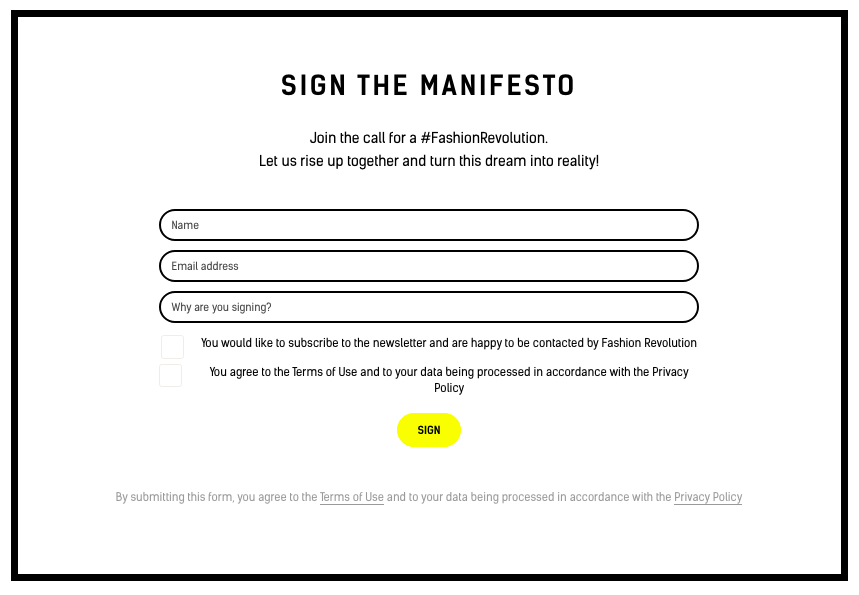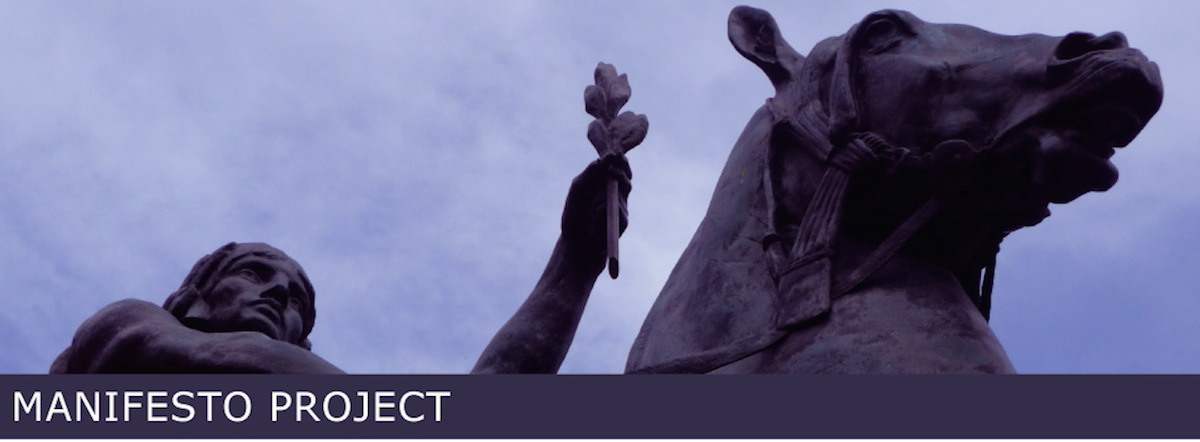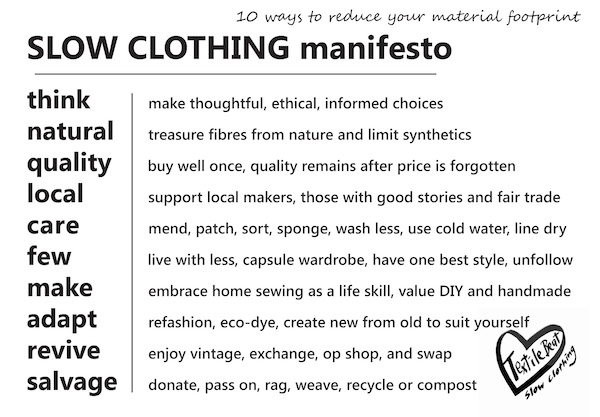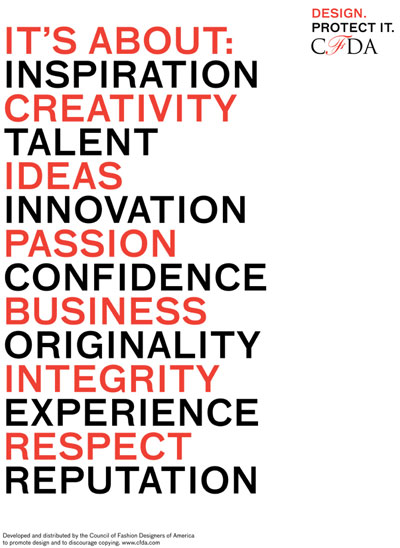Creator
“We are Fashion Revolution. We are designers, producers, makers, workers and consumers. We are academics, writers, business leaders, brands, retailers, trade unions and policymakers. We are the industry and the public. We are world citizens. We are a movement and a community. We are you.”
Purpose
“We love fashion. But we don’t want our clothes to exploit people or destroy our planet. We demand radical, revolutionary change.
This is our dream…”

Manifesto
Fashion provides dignified work, from conception to creation to catwalk. It does not enslave, endanger, exploit, overwork, harass, abuse or discriminate against anyone. Fashion liberates worker and wearer and empowers everyone to stand up for their rights.
Fashion provides fair and equal pay. It enriches the livelihood of everyone working across the industry, from farm to shop floor. Fashion lifts people out of poverty, creates thriving societies and fulfils aspiration.
Fashion gives people a voice, making it possible to speak up without fear, join together in unity without repression and negotiate for better conditions at work and across communities.
Fashion respects culture and heritage. It fosters, celebrates and rewards skills and craftsmanship. It recognises creativity as its strongest asset. Fashion never appropriates without giving due credit or steals without permission. Fashion honours the artisan.
Fashion stands for solidarity, inclusiveness and democracy, regardless of race, class, gender, age, shape or ability. It champions diversity as crucial for success.
Fashion conserves and restores the environment. It does not deplete precious resources, degrade our soil, pollute our air and water or harm our health. Fashion protects the welfare of all living things and safeguards our diverse ecosystems.
Fashion never unnecessarily destroys or discards but mindfully redesigns and recuperates in a circular way. Fashion is repaired, reused, recycled and upcycled. Our wardrobes and landfills do not overflow with clothes that are coveted but not cherished, bought but not kept.
Fashion is transparent and accountable. Fashion embraces clarity and does not hide behind complexity nor rely upon trade secrets to derive value. Anyone, anywhere can find out how, where, by whom and under what conditions their clothing is made.
Fashion measures success by more than just sales and profits. Fashion places equal value on financial growth, human wellbeing and environmental sustainability.
Fashion lives to express, delight, reflect, protest, comfort, commiserate and share. Fashion never subjugates, denigrates, degrades, marginalises or compromises. Fashion celebrates life.
Source
Comment
This is a great piece of work.
There are four outstanding things that I suggest you include in your manifesto.
One, the manifesto starts with a statement of community: this is who we are. It’s specific and it’s broad. (See Creators above)
Two, there is a clear three sentence concise statement of their purpose. It’s says this is our domain (We love fashion) but this is not working and we can no longer stand by and let this continue (But we don’t want our clothes to exploit people or destroy our planet. We demand radical, revolutionary change.) (See Purpose above)
Three, it presents a strong and clear ten-point manifesto. While the ten points cover a lot of territory they also have a more specific meaning when you apply them specifically to fashion. This also points to level of influence you can have in the decisions you make about what you buy and what you wear.
Four, a clear call to action in the form of ‘Sign the manifesto’. (See image).
If you want a framework for your manifesto you could do well to model this one. Best of all, it’s presented on a single web page.


